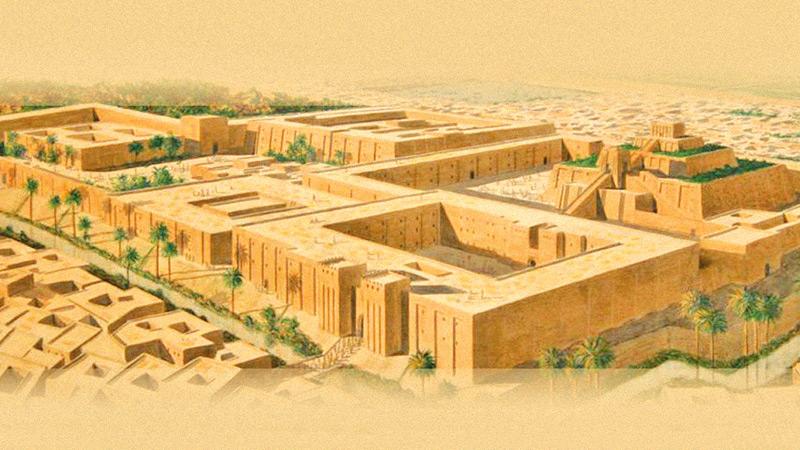
 The Assyrian Empire was a powerful state owned by the Mesopotamian civilisation in the middle of the Euphrates-Tigris rivers. According to historical sources, the Assyrian Empire, which was established around the 25th century BC, collapsed in the period between 612-609 BC.
The Assyrian Empire was a powerful state owned by the Mesopotamian civilisation in the middle of the Euphrates-Tigris rivers. According to historical sources, the Assyrian Empire, which was established around the 25th century BC, collapsed in the period between 612-609 BC.
The territory of the Assyrian Empire, which was built on the banks of the Tigris River, currently belongs to the states of Northern Iraq, Northeastern Syria, Southeastern Turkey, and Northwestern Iran.
Cuneiform tablets
 A group of archaeologists from Germany’s Tubingen University, who have been excavating in the Kurdistan region of Northern Iraq for many years, said in a statement a few weeks ago that they found the ruins of the lost city of Madaman, which belonged to the Assyrian Empire. Among the 4,800-year-old ruins are said to be 92 tablets with cuneiform characters (a pointed type of letters used by the ancient Mesopotamians) buried in a clay boat. The responsibility of reading and understanding the cuneiform tablets found in the village was assigned to Dr. Bettina Fest, a linguist from Heidelberg University in Germany. Accordingly, it was revealed that the land discovered by the archaeologists is the city of Madaman belonging to the Assyrian Empire.
A group of archaeologists from Germany’s Tubingen University, who have been excavating in the Kurdistan region of Northern Iraq for many years, said in a statement a few weeks ago that they found the ruins of the lost city of Madaman, which belonged to the Assyrian Empire. Among the 4,800-year-old ruins are said to be 92 tablets with cuneiform characters (a pointed type of letters used by the ancient Mesopotamians) buried in a clay boat. The responsibility of reading and understanding the cuneiform tablets found in the village was assigned to Dr. Bettina Fest, a linguist from Heidelberg University in Germany. Accordingly, it was revealed that the land discovered by the archaeologists is the city of Madaman belonging to the Assyrian Empire.
Further research has revealed that the city of Madaman, which was built between 2,800 - 2,650 BC, entered its golden age between 1,900 - 1,700 BC. It is said that the City, which collapsed between 911 - 612 BC, was buried at the end of prosperity during the Neo-Assyrian period.
The 92 cuneiform tablets found the date to around 1,250 BC. During that period, the city of Madaman was a part of the Assyrian Empire and its Governance was entrusted to Assur-Nasir, the Assyrian governor, according to the cuneiform tablets. Prof. Peter Faetzner has said that the tablets describe the administrative and commercial transactions between the governor Assur-Nasir and the inhabitants of Madaman. Also, according to the ancient documents found before this in other archaeological excavation areas, the city of Madaman has been a part of the Assyrian Empire in some cases and as an independent state in some cases.
Excavation
The palace on the site of the newly discovered cuneiform tablets is said to have been destroyed around 1,200 AD. But the city of Madaman has continued to exist. Prof. Peter Fetzner and the team believe that the City has been completely or partially attacked and destroyed on several occasions in history and has been rebuilt. The cuneiform tablets were placed in a clay boat made of a thick layer of clay. A scholar said that is more likely to be a deliberate act by the residents of Madaman. He said that when the palace was besieged by the enemy forces, the related boards must have been safely hidden.
Excavation works in the vicinity of Madaman have not been completed yet. Prof. Peter Fetzner and his team believe that the city of Madaman, on the trade route through Mesopotamia, Anatolia and Syria, may have flourished as a regional state as well as a powerful city. Sometimes it may have been a challenge to the great Mesopotamian civilisation.
However, archaeologists say that it is extremely fortunate that the area around Madaman has not been affected due to the war in Iraq. Hoping to continue the excavation work that has been going on since 2013, they expect to uncover a lot of information about the city of Madaman in the near future.
